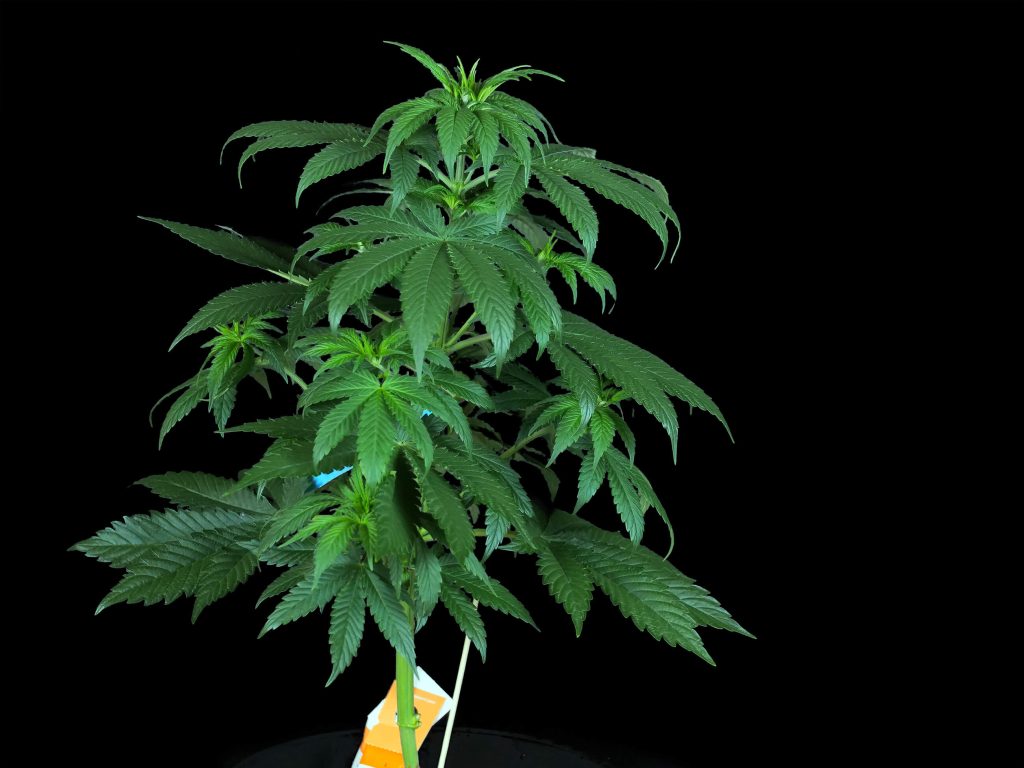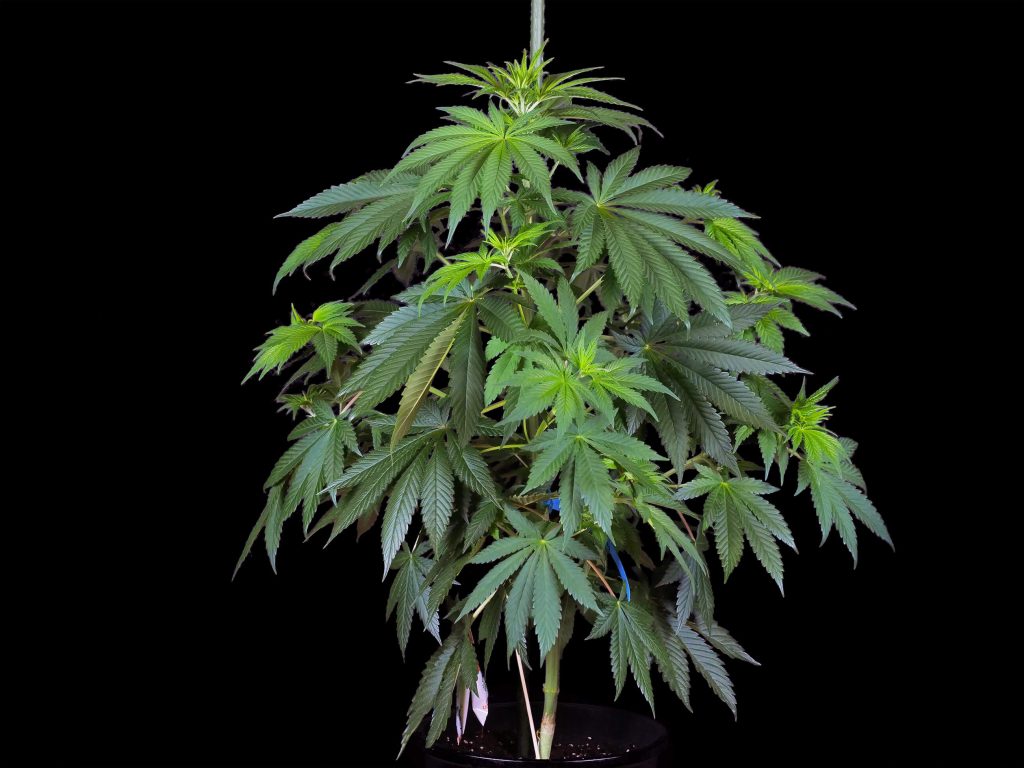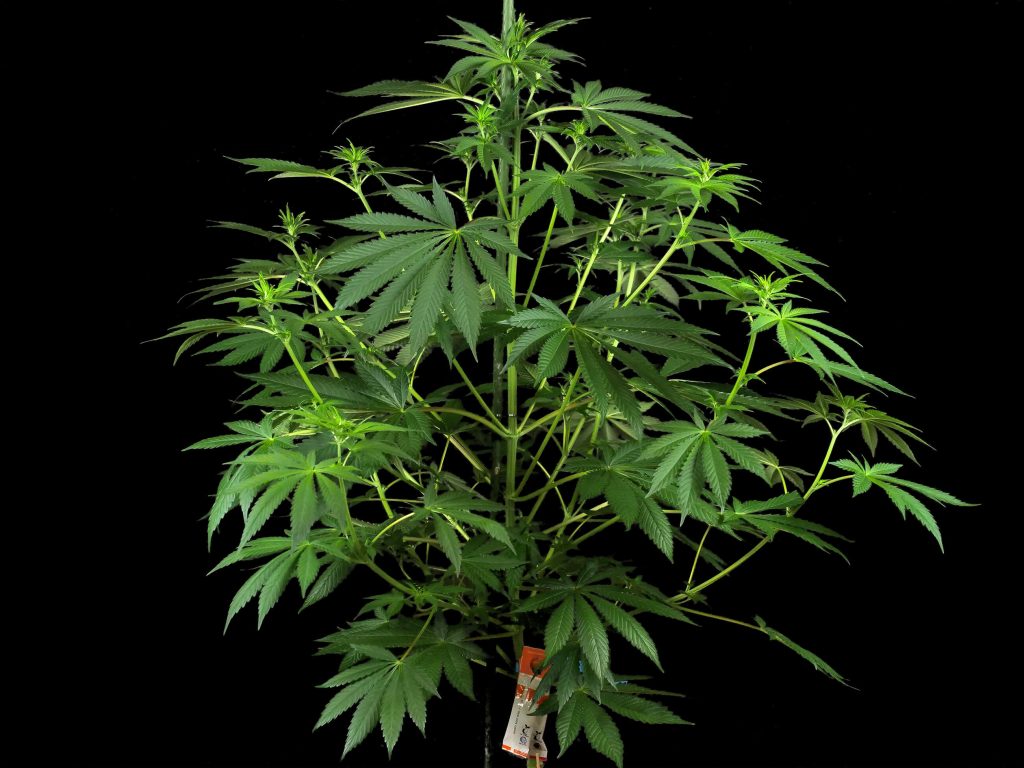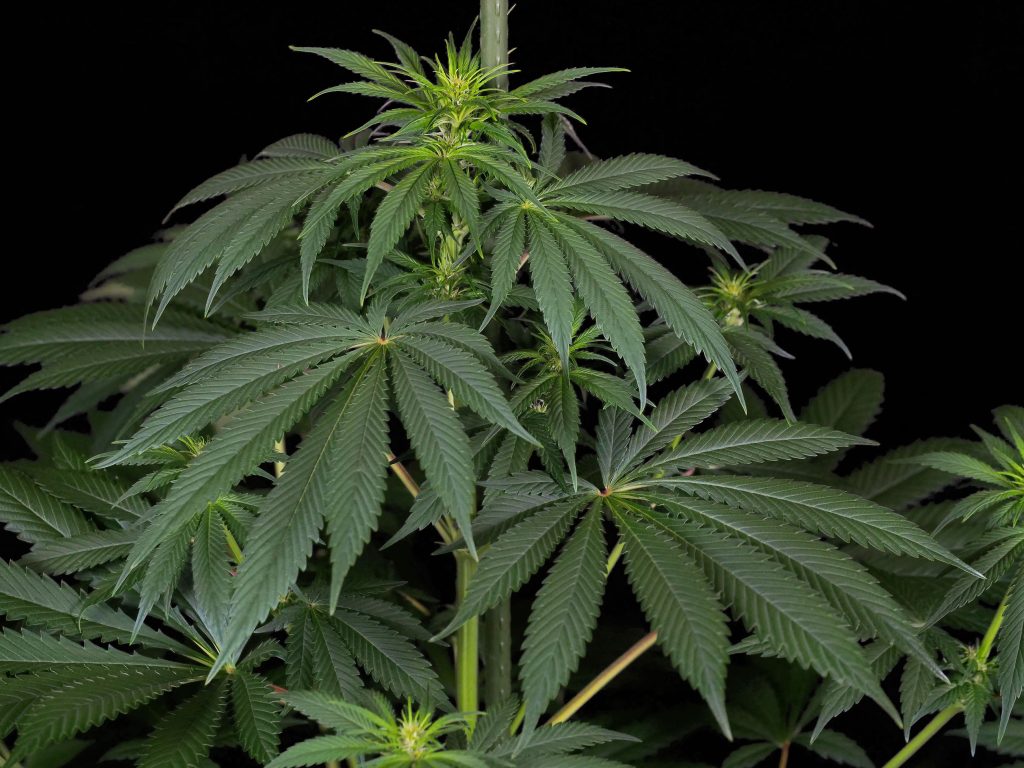Malibu OG Gold Feminized Grow Report
From planting the seeds in the soil to the final harvest, we have thoroughly documented the grow cycle of Malibu OG Gold Feminized. The flowers produced are rich in cannabinoids and provide a memorable, euphoric, and full-body high. These plants can grow quite tall, and with a bountiful XL harvest expected in 55 days, it’s definitely worth the wait.
Flowering stage: 67 days
Total time, seed to harvest: 99 days
Final yield: 116 grams
THC content: 25.67%
We were thrilled to start the germination process of the Malibu OG Gold Feminized seeds, which produce plants with an exquisite indica profile and morphology. The strain has an enchanting terpene profile, imbued with tropical notes and a delicate musky undertone. A product of Mendo Purps and Purple Kush crossbreeding, this unique blend of two iconic strains delivers an unforgettable experience.
Our Malibu OG Gold seeds were grown in our indoor cultivation area, starting with a 600W Green Power Phillips HPS bulb. As the plants matured, we switched to a 1000W bulb mounted 3 meters above the soil. For our medium, we opted for the BAC Lava Soil mix, which has consistently produced excellent results. During the vegetative stage, we used BIO Grow, while BIO Bloom was used in the flowering stage for nutrients. Before feeding, we always pH’d the solution to 6.
Our growing area was equipped with two oscillating fans that maintained air circulation by being mounted at opposite walls. To eliminate the potentially pungent aroma of Malibu OG Gold during the flowering period, we employed an inline fan and a carbon filter, which efficiently removed the aroma from the exhausted air.
In order to optimise growth potential, our environmental conditions were closely monitored. The temperature was kept at 23°C during the day and dropped to 21°C at night. Environmental conditions can vary depending on the growth stage of a plant. Therefore, we began with a humidity level of 65%, adjusted per the plant’s cycle. To initiate the vegetation stage, we followed an 18 hours on / 6 hours off schedule, which switched to 12 hours on / 12 hours off to initiate flowering.
To start the growth cycle of our Malibu OG Gold Feminized seeds, we first placed them into pre-moistened jiffy cubes. Within 48 hours, the seed’s crown appeared, and we then transferred the jiffy cube into a 1-litre container filled with BAC Laval Mix. We were cautious not to overwater the delicate new roots of our Malibu OG Gold seedling. We kept the cube moist on the third day by supplementing it with 100 ml of water at an EC of 0.8 mixed with rooting hormone.
In week two, we had to transplant our Malibu OG Gold to a larger 5-litre pot as the 1-litre pot was becoming too small for the developing root zone. By the end of the week, our seedling had grown to 11 cm in height and was covered in lush, dark green foliage. After adding rooting hormone, we supplemented 400 ml of water to encourage healthy growth. As the seedling’s roots had not yet spread into the new medium, we decided to increase the EC to 1.4.
The temperature was diligently maintained at a constant of 23°C throughout the day, and during the night, it would drop to 21°C. The relative humidity remained at 65%, ensuring optimal environmental conditions. As a precaution against pests, we strategically placed sachets of Neoseiulus Californicus and Amblyseuis Swirskii along the main stem. This strategy helps to protect our plants from thrips, aphids, and fungus gnat larvae.
During the third week, our plant had grown to a height of 21 cm with remarkable vertical growth. We kept our nutrient solution consistent at 400 ml and ensured the foliage was healthy and lush. The apical mainstem continued to develop well and appeared sturdy. The upper limbs did not shade the lower parts, allowing light and air to penetrate the canopy. This structure would result in numerous bud sites and a more abundant yield.
Our plant had grown to 32 cm by the end of the fourth week. As the root zone continued to develop, we raised the volume of our nutrient solution to 800 ml and increased the EC to 1.8. Our plant was magnificent with its deep green and healthy appearance, boasting large fan leaves comprising nine blades each. The side branches were growing consistently, and we decided not to perform any plant training, allowing the plant to grow naturally.
By the time week five arrived, we were ready to initiate flowering. We switched our light schedule to 12 hours on and 12 hours off, and our plant responded well to the change. Malibu OG Gold Feminized had abundant foliage, a robust apical mainstem, and compact internodal spacing. Thanks to our optimal environmental conditions, the structure remained compact and continued to thrive, reaching 44 cm by the end of the week. We subsequently increased the solution volume to 1000 ml.
We replaced Bio Grow with Bio Flower nutrients to encourage the plant to focus on bud development. By switching to flowering nutrients, high levels of nitrogen that promote vegetative growth are reduced. During this stage, cannabis plants require more phosphorus and potassium to support the development of flowers and buds. Potassium regulates processes and supports flower growth, while phosphorus is essential for energy transfer and DNA formation.
We carefully defoliated the plant in the sixth week, removing excess fan leaves to eliminate stagnant air pockets and improve airflow between the lower branches. As the week progressed, the plant’s lateral branches showed considerable growth and development, creating many bud sites and providing the plant with the potential to produce more flowers. As expected, we saw a small amount of stretch, and our Malibu OG Gold had reached a height of 68 cm and looked fantastic.
By the seventh week, our Malibu OG Gold Feminized had grown to 68 cm. As we have been feeding heavily, we flushed the plant with 1500 ml of water with an EC 0.8 and pH 6.5, which helps remove the unwanted residue of salts that build up. The lateral branches have almost reached the top of the apical stem, and we noticed the initial signs of bud formation. The rapid growth of the tips has increased, and we could see the emergence of white stigmas at the end of each branch.
In week eight, we observed a steady vertical growth of the plant, which reached 111 cm. The branch tips and the apical stem showed a promising increase in internodal spacing, and we were delighted to see that the apical cola was developing nicely. To further enhance the plant’s growth, we completed another round of defoliation, allowing light to reach the lower bud sites. We eagerly await the plant’s transition from vertical growth to bud formation.
In week nine, our plant stretched to a height of 129 cm. To optimise its growth, we reduced the humidity levels to 58%. In addition to its impressive height, we observed a significant improvement in bud development, with calyxes swelling and forming dense structures on the bracts. The sugar leaves were coated in a thick layer of resin, which adds to the plant’s overall appeal. After the defoliation process, we were pleased to see our Malibu OG Gold looking healthy and vibrant.
At the end of week ten, our Malibu OG Gold had completed its growing period. We decreased the humidity to 52% to prepare for the calyxes to swell and increase resin production. Lowering the humidity levels is essential to minimize the risk of botrytis and other diseases from spreading, thereby ensuring the plant’s overall health. We also removed lower branches for better air movement.
The bud structure is genuinely remarkable. The buds are incredibly dense, with calyxes tightly packed and stacking on themselves, creating a beautiful and compact structure. The buds are covered in a thick layer of resin, which gives them a glistening appearance. Upon closer examination, we noticed a slight purple hue to the buds, which indicates an abundance of anthocyanins. The compact bud structure and high resin content make this strain ideal for those who value quantity and quality.
In week eleven, we observed that with the onset of bud development, the plant experienced its final growth push and reached an impressive height of 133 cm. This growth spurt was visible not only in the apical stem but also in the lateral branches, and the plant’s overall structure looked robust and healthy. As part of our ongoing efforts to optimise bud development, we continued to remove any unnecessary foliage to improve light penetration, especially in the lower canopy.
Since we had not flushed our medium for a while, we utilized 1500 ml of water with EC 0.8 and PH 6.5 to clear any unwanted residues from the root zone. We then resumed our regular feeding schedule.
The environmental conditions remained constant during the twelfth week, and our plant was still 133 cm tall. However, our Malibu OG Gold strain started emitting a pleasant floral aroma in our growing area. As we had equipped the room with an efficient ventilation system and carbon filters, the undesirable odours were effectively eliminated before the air was expelled outside.
Activated carbon, used in carbon filters, undergoes a unique processing technique that renders it highly porous and increases its surface area. This unique property enables activated carbon to adsorb a broad spectrum of molecules responsible for producing unpleasant aromas.
During week thirteen, we meticulously removed lower branches, and as a result, the swollen buds enlarged the size of our Malibu OG Gold to 134 cm. Upon inspecting the trichomes, the plant was nearing its optimal maturity. As growers, we aim for trichome heads that are 10% transparent, 80% milky, and 10% amber. This is a crucial stage in the cultivation process, as the harvest timing can significantly impact the overall quality and potency of the final product.
Week fourteen was the final week of our growth cycle, and we are highly excited to harvest time! After a growth period of 84 days, the Malibu OG Gold plant had reached an impressive height of 134 cm. The buds had developed well, with chunky and dense formations, displaying swollen calyxes and dark purple hues. The plant was covered with a heavy coating of trichomes, threaded with deep orange pistils and surrounded by dark green foliage. Overall, we were delighted with the results!
Before harvesting our Malibu OG Gold, we pruned any extra fan leaves that did not have notable trichome coverage. We rigorously monitored the temperature and humidity of our drying space, keeping the humidity at 60% and a constant temperature of 15.5°C.
We took special care of the drying area of our Malibu OG Gold flowers to ensure their optimal quality. The area was deliberately dark while a breeze gently circulated the growing area. It was a conscious decision not to blow the fans directly on the plants, as this could potentially dry them too quickly. A slow drying process allows the preservation of the terpenes, flavonoids and cannabinoids in the flowers, which are essential components that contribute to the overall quality and aroma.
We harvested our Malibu OG Gold by cutting it at the base of the stem and brought the entire plant to our drying area, where we hung it upside down. It took 21 days for the drying process to complete. A helpful tip to determine when your drying process is complete is to bend the smaller branches; if they snap, it is a sign that they are ready to be cured.
When curing our dried flowers, we opted for glass mason jars and kept the lids off for 24 hours. As our buds retain moisture, it is crucial to avoid overfilling the jars to prevent mould formation. Breaking down large buds into smaller nugs can also avoid pockets of stagnant air within the bud. We then placed the jars in a dark, climate-controlled drying room.
We burped the jars multiple times a day from the second day onwards for the first couple of weeks. This process involved taking the lids off for an hour each time to allow the excess air to escape. Like a fine wine, we firmly believe that the longer the curing process, the more refined the terpene profile.
As the days passed, we noticed the aromas emanating from our Malibu OG Gold were becoming more layered and pleasurable. During the final four weeks of the curing process, we reduced the frequency of burping the jars to just once a day. To ensure the top-notch quality of our product, we sent a small sample to our laboratory for cannabinoid testing. The results were remarkable, revealing a THC content of 25.67%!
After the curing process, we were excited to sample our Malibu OG Gold and carefully selected the most exquisite nugs from the jar. Gently breaking the pieces into small, manageable bits, we delicately placed them between the razor-sharp teeth of our grinder. Once we had achieved a perfectly smooth and consistent grind, we emptied the ground flower into an unbleached rolling paper and rolled up an impeccably crafted joint.
Our Malibu OG Gold strain inherits earthy tones from its indica side, while the sweetness is likely derived from sativa influences. Additionally, this strain’s aroma and flavour emit subtle undertones of tropical fruit. The presence of myrcene adds an earthy note to the terpene profile, making it more complex and enjoyable. Overall, the aroma of Malibu OG Gold is exciting and mouthwatering, and the taste is equally impressive.
After lighting up and passing it around to my friends, we noticed that the joint burned exceptionally well and evenly. The strain seems to be a perfect hybrid, providing a balanced combination of effects from both indicas and sativas. Initially, it gave us an uplifting cerebral high, gradually becoming a sense of relaxation and a full-body high.
Over the course of 84 days, we were able to harvest 116 grams of exquisitely aromatic and flavourful dry cannabis flowers from our Malibu OG Gold. This cultivar is remarkably easy to grow and requires low maintenance, making it an excellent option for novice and experienced growers.
While it can produce lush yields independently, growers can increase the yield by employing training techniques such as topping and pruning. Overall, we are thrilled with the results we obtained from our Malibu OG Gold Feminized seeds, and we highly recommend this strain to others looking for a satisfying and rewarding growing experience.
-
Disclaimer:
Laws and regulations regarding cannabis cultivation differ from country to country. Sensi Seeds therefore strongly advises you to check your local laws and regulations. Do not act in conflict with the law.









